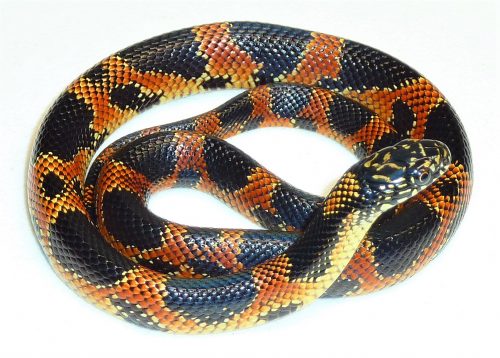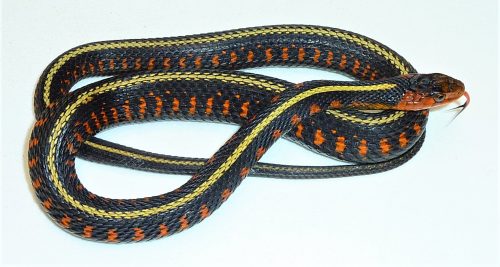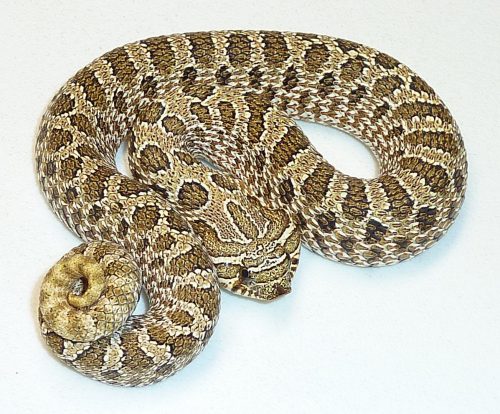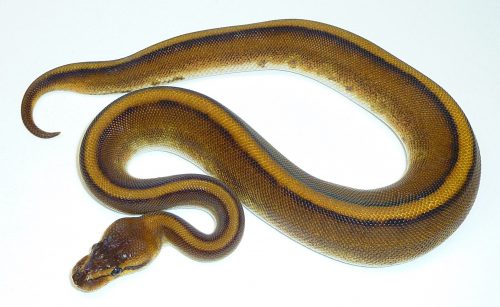Anyone intrigued by snakes may decide to keep one as a pet or as an object of fascination. Responsible snake ownership requires considerations which may not be immediately obvious to all.
The following provides summary information and basic requirements for responsible snake ownership. For a fuller picture or expanded detail, please see the links to additional recommended readings that follow the article. Reputable locally-owned pet stores and well-known breeders are also excellent sources of information.
Know species requirements
Not all snakes are suited to captivity. Those that are have requirements that range from “beginner” to “expert” levels of care owing to their diverse behaviors and adaptations to different environments. Thus, it is important to know the natural history of the species you wish to keep.

Snakes reach adult sizes ranging from tiny (15 cm) to truly gigantic (> 7 m), and they are adapted to a wide diversity of environments ranging from temperate to tropical, humid to arid, aquatic to arboreal, and sea-level to mountaintops. Snakes are short to long-lived (in excess of 30 years) and exhibit behaviors ranging from sedentary to active and submissive to aggressive. Snakes feed on hundreds of different types of animals including, in many cases, other snakes. Finally, snakes have complex life histories that can require or cause changes to their needs according to seasonality or life stage. This is an endless area of fascinating study for scientists, but one that poses challenges to those attempting captive husbandry of these animals. For a first snake, one should select a species whose requirements are less complex, with fewer responsibilities for the owner.
Whatever the captive requirements or level of experience of the keeper, it is best to select snakes that are captive bred and born (CBB). CBB animals are almost always healthier than their wild-caught (WC) counterparts. In addition to ethical concerns related to collecting snakes from the wild, any WC snake must be screened by a qualified veterinarian for parasites and diseases and treated accordingly – often at great expense and not always with satisfactory results. Any snake showing signs of disease, whether CBB or WC should receive qualified veterinary treatment. In adding any new snake to a collection, quarantine procedures should be observed.
See below for suggestions regarding pets for beginner snake enthusiasts.
Know the laws
There are laws that govern the trade or possession of snakes at international, national, state, and local levels. Most are in place to protect wild populations of snakes from overharvest or native ecologies from invasion. Some are meant to protect the keeper (e.g., venomous snake laws). Some restrict resale (see “Final Thoughts” below). As many species can now be purchased online with little to no communication between seller and buyer, it truly is important that the customer know the laws that apply to their local area.

Regulations related to keeping captive wildlife, including snakes, in the State of Florida can be found on the website of the Florida Fish and Wildlife Conservation Commission.
Caging and typical minimum husbandry requirements
All captive snakes must be kept in an enclosure when not being safely handled. After purchasing a snake suitable to their level of expertise, the first responsibility of the snake owner is to provide an escape-proof enclosure.
When paired with the appropriate species of snake, many commercially available modified aquaria or terraria are excellent at preventing escape. These include aquaria with screen tops that securely snap in place at multiple points around the perimeter, terraria with single or dual sliding glass doors secured by a pin or a jeweler’s lock, or those units with hinged doors that are held closed by pre-manufactured clasps or other mechanisms.

Besides the enclosure, the basic equipment for responsibly meeting minimum requirements typically include one or more heat sources for establishing an appropriate thermal gradient and/or lighting regime, hides (most snakes spend a great deal of time hiding in substrate or crevices and restricted spaces), appropriate humidity (important for shedding their skin), a water source, appropriate substrate that can be easily replaced or cleaned, and branches or rocks for climbing or sloughing (rough surfaces aid snakes in shedding). Providing sufficient space and complex environments are important to the health and well-being of snakes in captivity. Much information on all these types of equipment is available elsewhere. However, worth mentioning in this space are the potential dangers of overheating (of concern to the animal) and fire (of concern to your home) from unregulated heating devices. One should always employ a rheostat or thermostat for such devices if they cannot be monitored closely. Consult an authoritative source or knowledgeable person for information on the appropriate temperatures for your snake.
Those familiar with keeping certain lizards in captivity are likely aware of their need for exposure to UV-B light for their bodies to use the calcium they eat. Snakes, however, use the calcium they receive from their prey without exposure to UV-B rays. Therefore, full-spectrum lighting is not a requirement for keeping snakes in captivity.
Feeding

All snakes eat other animals, and they typically swallow their prey whole. While many captive snakes will feed on previously frozen, thawed, and room-temperature prey, some will not. Such recalcitrant individuals may require live prey or an animal that has recently been killed. Some keepers may harbor reservations over the feeding of live prey or killing an animal to feed it to their snake. Sometimes reservations of this type center on the killing of mammalian prey (e.g., rodents). For the responsible keeper that has fewer reservations about offering live captive-reared crickets or goldfish, there are species of snakes available that thrive on these prey types in captivity. It is important to learn about both the preferred prey of your snake and a feeding schedule that will meet its normal growth requirements.
Final thoughts
Not everyone finds snakes fascinating or is comfortable with snakes. For the responsible snake keeper, further considerations include:
- Who will care for your snake if you must travel? Are such potential caretakers truly comfortable in doing so?
- How—if at all—do you plan to share your pet/captive animal with others, including those that might have a fear of snakes but who visit your home? It is never okay to tease or frighten someone with a snake.
- Many young children seem innately fascinated by snakes. This presents both opportunities and challenges. With proper supervision and care, children can safely and comfortably grow their interest in snakes and other reptiles. Without responsible supervision, a child might have unfortunate emotional or physical (in the case of a bite) experiences for which the keeper could be liable.
- Well-kept reptiles are rarely a hygiene problem. Still, particularly with young children, it is good practice to wash hands before and after safely touching a snake.
- Always know the maximum adult size of a snake before making your purchase. The majority of CBB snakes offered for sale are juveniles. Some pythons can grow from a juvenile size of less than 30 inches (76 cm) to 8 feet (2.5 m) in their first year.
- What will become of your snake if you lose interest in keeping it or can no longer care for it? Your first consideration should be taking the animal back to the point of sale so that it can be redirected to a new home. Second, a keeper may be able to trade or sell the animal to another responsible snake owner — but check your local laws first. Certain states bar sale of snakes or other animals without a license. Certain state agencies offer “exotic animal amnesty days” during which reptiles can be surrendered, but this should be considered an option of last resort. Zoos, aquaria, and even local nature centers are inundated with offers of surrendered animals and generally will not provide a home to animals. Never, under any circumstance, release your captive snake to the wild. Not only is this illegal in many cases, but it can lead to serious ecological problems.